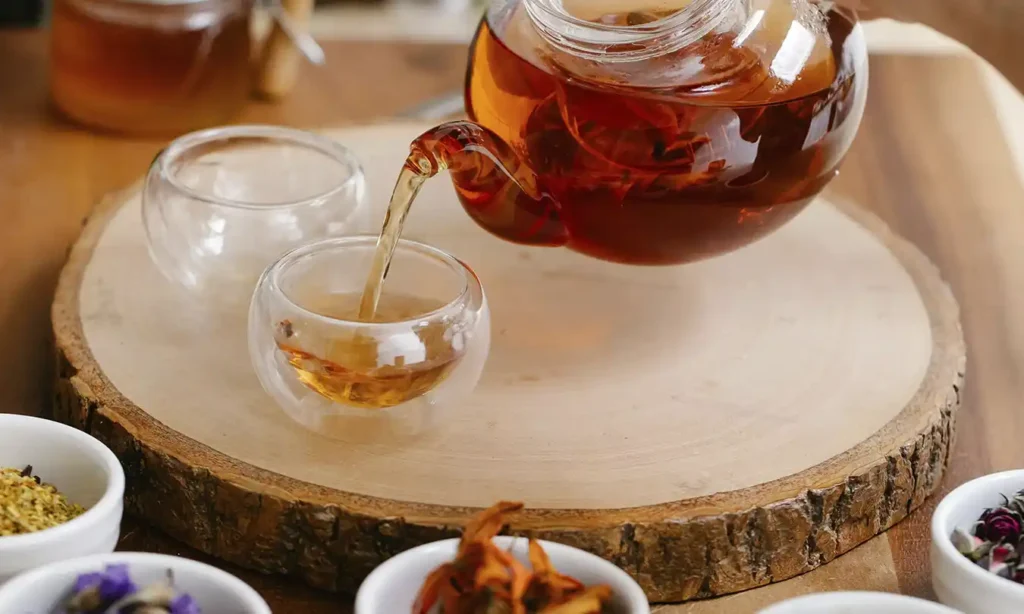Enhancing Indoor Air Quality: The Top Plants for Purifying Your Home Environment
In today’s world, indoor air pollution is a growing concern, with various pollutants like volatile organic compounds (VOCs), formaldehyde, and benzene affecting our health. Fortunately, nature has provided us with a natural solution – indoor plants. Not only do they add aesthetic appeal to our homes, but many plants also have the ability to purify the air by absorbing harmful toxins. In this article, we’ll explore some of the best indoor plants known for their air-purifying qualities, backed by scientific research.
Peace Lily (Spathiphyllum spp.)
- Peace lilies are not only admired for their elegant white flowers but also for their air-purifying abilities. NASA’s Clean Air Study identified peace lilies as one of the top plants for removing common indoor pollutants such as formaldehyde, benzene, and trichloroethylene.
Source: Wolverton, B. C., Johnson, A., & Bounds, K. (1989). Interior landscape plants for indoor air pollution abatement (NASA-TP-1772). NASA.
Spider Plant (Chlorophytum comosum)
- Spider plants are renowned for their resilience and ease of care, making them popular choices for indoor environments. They are highly effective at removing airborne toxins such as formaldehyde and xylene. Additionally, spider plants are non-toxic to pets, making them a safe option for households with animals.
Source: Wolverton, B. C., Johnson, A., & Bounds, K. (1989). Interior landscape plants for indoor air pollution abatement (NASA-TP-1772). NASA.
Aloe Vera (Aloe barbadensis miller)
- Aloe vera is not only prized for its soothing properties for skin ailments but also for its air-purifying capabilities. This succulent is effective at removing formaldehyde from indoor air, a common off-gassing pollutant found in many household products.
Source: Lohrasbi, T., Pourmoghadas, H., Kahrizi, D., Faghih, M. A., & Rashidi, A. (2014). Evaluation of Aloe Vera as an Indoor Plant for Removal of Formaldehyde in Sealed Acrylic Chamber. Journal of Environmental Science and Technology, 11(3), 121-126.
Link: https://www.sid.ir/en/journal/ViewPaper.aspx?ID=402772
Snake Plant (Sansevieria trifasciata)
- Snake plants, also known as mother-in-law’s tongue, are hardy and adaptable plants that thrive in various indoor conditions. They are particularly effective at filtering out toxins like formaldehyde, benzene, xylene, and trichloroethylene. Snake plants are also known for their ability to release oxygen at night, making them ideal bedroom companions.
Source: Wolverton, B. C., Johnson, A., & Bounds, K. (1989). Interior landscape plants for indoor air pollution abatement (NASA-TP-1772). NASA.
Bamboo Palm (Chamaedorea seifrizii)
- Bamboo palms are not only aesthetically pleasing with their tropical appearance but also effective at purifying indoor air. They excel in removing formaldehyde and benzene, common indoor pollutants found in furniture and household cleaners.
Source: Wolverton, B. C., Johnson, A., & Bounds, K. (1989). Interior landscape plants for indoor air pollution abatement (NASA-TP-1772). NASA.
Boston Fern (Nephrolepis exaltata)
- Boston ferns are valued for their lush foliage and ability to thrive in humid environments. They are excellent at removing formaldehyde and xylene from indoor air, making them suitable additions to bathrooms or kitchens where humidity levels tend to be higher.
Source: Wolverton, B. C., Johnson, A., & Bounds, K. (1989). Interior landscape plants for indoor air pollution abatement (NASA-TP-1772). NASA.
English Ivy (Hedera helix)
- English ivy is a versatile vine known for its ability to climb and cascade, adding a touch of greenery to any indoor space. It is effective at reducing airborne mold spores, making it beneficial for individuals with allergies or respiratory issues. Additionally, English ivy has been shown to filter out formaldehyde, benzene, and airborne fecal matter.
Source: Wolverton, B. C., Johnson, A., & Bounds, K. (1989). Interior landscape plants for indoor air pollution abatement (NASA-TP-1772). NASA.
Incorporating indoor plants into your living space not only enhances its aesthetic appeal but also improves air quality by reducing levels of indoor pollutants. The plants mentioned above have been scientifically proven to be effective at purifying indoor air, providing a natural and eco-friendly solution to combatting indoor air pollution. By introducing these plants into your home environment, you can create a healthier and more pleasant living space for you and your family.
By investing in these green companions, you not only enhance your indoor environment but also contribute to your overall well-being in a sustainable and eco-friendly manner. So, why wait? Bring home these natural air purifiers and enjoy the benefits of cleaner, fresher air indoors.
How to care for indoor plants and keep them healthy?
The Ultimate Guide to Indoor Plant Care: Tips for Keeping Your Green Companions Healthy and Thriving
Bringing indoor plants into your home not only adds a touch of nature but also offers numerous benefits, from purifying the air to reducing stress levels. However, caring for indoor plants requires attention and understanding of their specific needs. In this comprehensive guide, we’ll explore essential tips and practices to ensure your indoor plants remain healthy and vibrant.
- Light:
- Identify the light requirements of your plants: Some plants thrive in bright, indirect light, while others prefer low-light conditions. Place your plants accordingly to ensure they receive adequate light for photosynthesis.
- Monitor light exposure: Observe how much light your indoor space receives throughout the day and adjust the placement of your plants accordingly. Rotate them periodically to promote even growth and prevent leaning towards the light source.
- Supplement with artificial light: If natural light is limited, consider using grow lights to provide additional illumination for your plants, especially during the darker months.
Source: “Light Quality, Irradiance, and Duration Influence Growth and Flowering of Foliage Plants” by R.G. Lopez and E.S. Runkle.
- Watering:
- Understand the water needs of your plants: Different plants have varying water requirements, so it’s crucial to research and understand the specific needs of each species. Overwatering is a common mistake that can lead to root rot, while underwatering can cause dehydration and wilting.
- Check soil moisture: Before watering, check the moisture level of the soil by inserting your finger into the soil up to the first knuckle. Water only when the top inch of soil feels dry to the touch.
- Use room-temperature water: Avoid using cold water directly from the tap, as it can shock the roots. Allow the water to reach room temperature before watering your plants to prevent stress.
- Drainage is key: Ensure your pots have drainage holes to allow excess water to escape. Standing water can lead to root suffocation and fungal diseases.
Source: “Water Movement through Plant Roots” by P.J. Kramer and J.S. Boyer.
- Humidity:
- Increase humidity levels: Many indoor plants, especially tropical varieties, thrive in humid environments. To mimic their natural habitat, increase humidity by misting the leaves with water, placing a humidifier nearby, or grouping plants together.
- Create a pebble tray: Place a tray filled with water and pebbles beneath your plants to create a humid microclimate around them. As the water evaporates, it increases humidity without saturating the soil.
- Avoid drafts and dry air: Keep your plants away from heating vents, air conditioners, and drafty windows, as these can create dry air that can stress your plants and increase water loss through transpiration.
Source: “Humidity Sensing and Regulation in Plants” by R.C. Pearce, G.N. Kaiser, and E. Galston.
- Fertilization:
- Use a balanced fertilizer: Choose a fertilizer specifically formulated for indoor plants and dilute it to half or quarter strength to prevent over-fertilization. Apply fertilizer during the growing season (spring and summer) according to the instructions on the label.
- Monitor plant response: Pay attention to how your plants respond to fertilization. Signs of over-fertilization include burnt leaf tips, stunted growth, and yellowing leaves. Adjust your fertilization schedule accordingly.
- Consider organic alternatives: Organic fertilizers, such as compost tea or fish emulsion, provide nutrients to your plants while promoting soil health and microbial activity.
Source: “Fertilizer Use in Crop Production” by D.E. Kissel and J.B. Beasley.
- Pruning and Maintenance:
- Remove dead or yellowing leaves: Regularly inspect your plants for signs of disease, pest infestations, or nutrient deficiencies. Prune away dead or yellowing leaves to promote airflow and prevent the spread of pathogens.
- Trim leggy growth: If your plants become leggy or overgrown, prune them back to encourage bushier growth and maintain their shape. Use clean, sharp pruning shears to make clean cuts and minimize stress on the plant.
- Clean foliage: Dust can accumulate on the leaves of indoor plants, reducing their ability to photosynthesize effectively. Wipe the leaves gently with a damp cloth or sponge to remove dust and keep them looking vibrant.
Source: “Pruning: An Annotated Bibliography” by R. L. Anderson.
Caring for indoor plants requires attention to detail and an understanding of their specific needs. By providing the right amount of light, water, humidity, and nutrients, you can ensure that your green companions thrive and enhance your indoor environment. Regular maintenance, including pruning and monitoring for pests and diseases, is essential for keeping your plants healthy and vibrant. With proper care and attention, your indoor plants will not only beautify your living space but also contribute to a healthier and more harmonious home environment.




